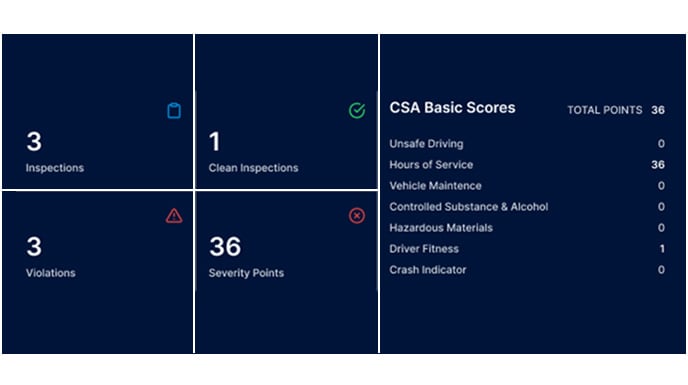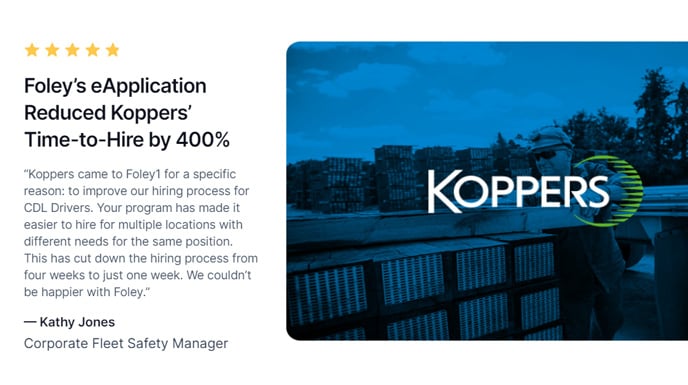What the DOT Won't Tell You About Compliance Audits

Passing a DOT compliance audit starts with keeping your risk profile low.
DOT compliance audit… A phrase that strikes fear into the hearts of many. While federal compliance reviews are often stressful and extensive processes, there are a few things you should know to help reduce your company's audit risk and understand how you're evaluated.
Common DOT Compliance Review Triggers
DOT compliance reviews can occur at any point while a company is regulated by the FMCSA. Although these reviews can occur at any time, various factors may “red flag” the FMCSA to review your company’s DOT operations. These triggers include:
- Accidents: One accident can alert the FMCSA to conduct a compliance review. How much notice the FMCSA provides depends on the severity of the accident. Accidents that result in a fatality or serious injury will prompt the FMCSA to conduct a review with as little notice as possible.
- Roadside Inspections resulting in “out-of-service” violations: The more roadside inspections that occur with violations – such as mechanical, hours of service, or moving violations — the more likely the FMCSA will want to conduct a compliance review.
- Failure of a New Entrant Safety Audit: It is never a good thing to start on the wrong foot. The FMCSA tends to monitor companies that did not pass the NESA at the get-go. Having a firm grasp on the regulations is the best way to ensure the NESA is passed and the FMCSA won’t follow up with a compliance review later on. Learn more about the New Entrant Safety Audit here.
Understanding the Outcomes of a DOT Compliance Review
Unlike the New Entrant Safety Audit, a compliance review may result in substantial financial penalties depending on the amount and severity of the violations found. In addition, three “safety rating” designations may be assigned to a company following a compliance review.
- Satisfactory – This is the most desired designation. It means the FMCSA has determined the company has adequate safety management controls in place and is doing its best to comply with federal requirements.
- Unsatisfactory – While satisfactory is the most desired safety rating, unsatisfactory is the most dreaded. This means the FMCSA has found serious violations and/or non-compliance with federal requirements that may cause safety hazards. In addition to the financial penalties incurred, the company must prove corrective action by submitting a “Safety Management Plan” deemed acceptable by the FMCSA within 60 days for property carriers or 45 days for passenger/hazmat carriers. If they fail to do this, they risk being placed out of service.
- Conditional –A conditional safety rating designation means that although the FMCSA found at least one violation and/or non-compliance with federal requirements, the company does not necessarily pose an imminent safety hazard. Although a company will not face an out-of-service order, they will incur financial penalties and their DOT operations may be negatively impacted due to contractors and insurance companies being reluctant to work with them. Therefore, to remove a conditional safety rating designation, the company must prove corrective action by submitting a “Safety Management Plan” deemed acceptable by the FMCSA.
- Un-ratable — Sometimes the FMCSA conducts a “focused” compliance review that only deals with one aspect of federal requirements, and therefore a safety rating designation will not be assigned. However, violations found may result in financial penalties.
If you're selected for a DOT compliance review, there are some key DOT violations to watch out for. All of the following are considered “critical” or “acute” in the eyes of the FMCSA and will cause an immediate unsatisfactory or conditional safety rating designation. They can also lead to substantial fines.
These DOT violations include, but are not limited to:
- Any type of drug and alcohol testing violation (provided drug and alcohol testing is required).
- Using a driver without a valid license.
- Using a driver who has been deemed medically unqualified.
- Operating a CMV without the required level of insurance.
- Failing to maintain hours-of-service records.
- Operating a vehicle declared out-of-service during a roadside inspection before the required repairs are made.
- Operating a CMV that has not undergone an annual/periodic DOT inspection.
- Falsification of records.
Have you had an FMCSA Compliance Review that resulted in a Conditional or Unsatisfactory safety rating? Foley is here to help your business recover.
To speak with a compliance specialist about how we can help, call Foley at (800) 253-5506 or fill out the form below.
Related Articles
How an Autonomous Transport Foley Customer is Audit-Ready Everyday
Are Your Driver Qualification Files Putting You At Risk?
Your DOT Driver Qualification File Checklist 2025
.png)


